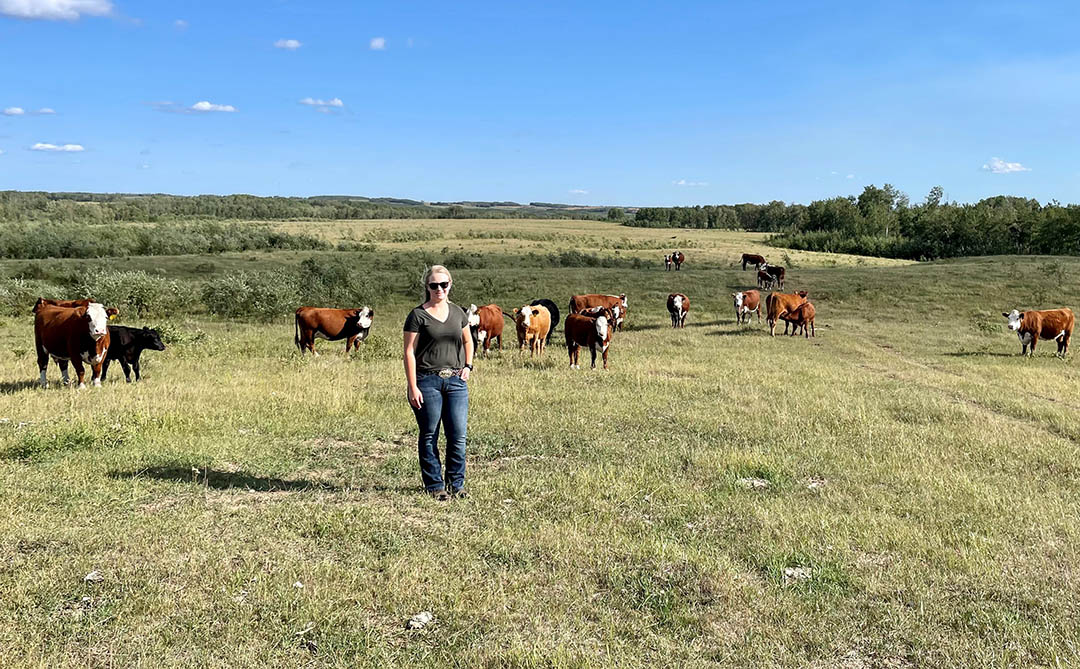AB Direct - Steers
Rail: ---
AB Direct - Heifers
Rail: ---
US Trade- Steers
Rail: 290.00 (IA)
US Trade - Heifers
Rail: 290.00 (IA)
Canadian Dollar
0.02

What We’re Reading | USask Research: Finding feed solutions for drought conditions
With a history dating back more than a century through five generations of Métis farmers, Megan Wasden has a deep appreciation and connection to the land.
By James Shewaga
“The land is very special and very important to us, and that is a big part of being Indigenous,” said the University of Saskatchewan (USask) Master of Science student in the College of Agriculture and Bioresources. “Our land that we still farm on has been in our family for over a hundred years and I plan to keep it in the family for many more generations. So it’s very important and very special to me. We have farmed this land for many years and we have to keep producing off of it, so we have to treat it with respect for it to continue giving back to us.”
As this year’s drought conditions affected producers throughout the province, including dramatically reducing available feed for cattle ranchers, Wasden was working daily searching for more sustainable and hardier forage options that can survive and thrive in low moisture conditions. Wasden’s work—under the guidance of her graduate supervisor Dr. Bart Lardner (PhD)—has been centred at USask’s Livestock and Forage Centre of Excellence, with her research drawing attention from fellow scientists and producers alike.
‘What We’re Reading’ is a quick look at some of the issues and insights Alberta Beef Producers’ content creators and editors are reading to stay up-to-date, to broaden perspectives, and to explore issues relevant to the agriculture industry.
Leave a Comment
Add abpdaily.com to your home screen
Tap the menu button next to the address bar or at the bottom of your browser.
Select ‘Install’ or ‘Add to Homescreen’ to stay connected.



Share this article on